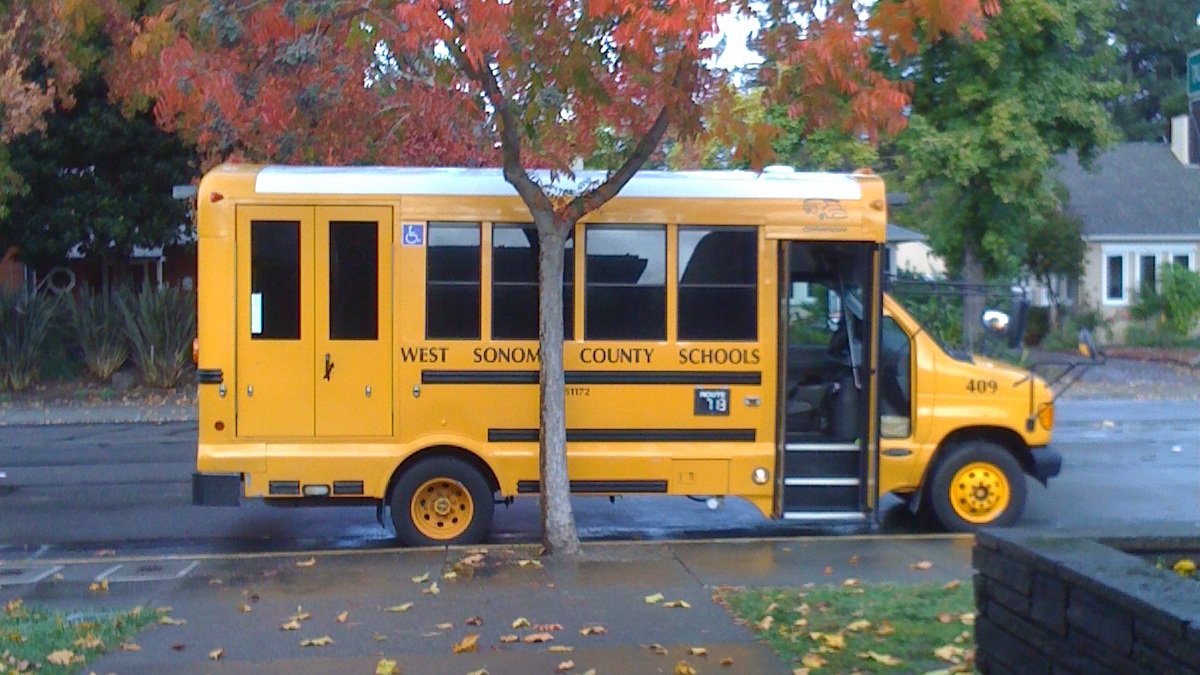What is an Itinerant Teacher?
May 19, 2021
What is an itinerant teacher? That word, I-TIN-ER-ANT, it’s hard to say let alone explain what it is.
In a nutshell, an ITINERANT TEACHER is a traveling teacher. You will most often see this type of teacher for students who have hearing loss or vision loss. For the purpose of this post, we’re going to focus on Itinerant Teachers of the Deaf or Hard of Hearing. We’ll discuss where this role came from and how it differs from a Teacher of the Deaf and Hard of Hearing who is NOT itinerant.
Where did the Itinerant Teacher come from?
These days, the majority of Teachers of the Deaf and Hard of Hearing are itinerant teachers. It didn’t used to be that way. This is actually a fairly new concept in deaf education.
The delivery of services from a Teacher of the Deaf and Hard of Hearing have been impacted by a number of things, including evolving legislation, the Newborn Hearing Screening, Early Intervention Services, Birth to Three services, Early Childhood Programming, literacy interventions, all paired with advances in technology.
All of this has drastically changed the scope of programming for deaf and hard of hearing students.
Let me explain….
A Brief History of Deaf Education in the US
Historically, students with hearing loss were often sent to the Residential School for the Deaf in their state. At the residential school, children were taught how to read and write and do manual skills with other children who also had hearing loss. The first residential school for the deaf opened in the early 1800s. Very different from what they are today, one of the first residential schools for the deaf was called Connecticut Asylum for the Deaf and Dumb. If the name of that school churns your stomach, you’re not alone. It’s now called the American School for the Deaf - a much better name. But the original name shows you what some of those first schools were considered - asylums or institutions - for kids who had little potential. This mentality has drastically changed over the past 200 years and this shows you how far we have come.
Prior to this time, there really were very few educational options if you had a child who could not hear. Once these residential institutions were established in the early 1800s, children would live and go to school there and rarely see their families. The families would need to travel to see their children at the school. Eventually things changed and students would travel home on the weekends to see their family. This arrangement is the norm for students at residential schools today (unless they live close enough to commute daily.)
Because of this arrangement, deaf children formed very tight bonds with their peers and the adults who supervised them at the school. They had a very tight connection with their school. This bond still continues today with students who attend residential schools and adults who graduated from them.
Currently, approximately 40 states still have at least one Residential School for the Deaf. Some state schools have experienced closures due to the movement to the itinerant model, and students being served in their home districts. This has formed sadness and outrage to many in the deaf community.
This shift started in 1975 with the All Handicapped Children's Act (also called PL94-142). This law began requiring schools that accepted Federal funds to offer education for children with disabilities. Schools could no longer automatically send children to the residential school for the deaf - they needed to offer “equal education” opportunities near home. This began the process of schools offering what we now call “Regional Programs” for students who have hearing loss.
Oftentimes a regional program would be located at a special school, or would be a “self-contained classroom” inside a neighborhood school where there would be an entire classroom (or classrooms) of students who had hearing loss. These students were generally not mixed with the other kids in general education. Concurrently, there was a large Rubella epidemic in 1968-1969 which caused thousands of children to be born deaf. The launching of PL94-142 happened as this generation of deaf children were entering school, resulting in these regional programs hiring multiple teachers of the deaf and hard of hearing to educate these children in a deaf and hard of hearing program. Students would be bussed to a “nearby” (sometimes 1 ½ hours away) district and attend a special school with a special program for kids who were deaf or hard of hearing. They would have a classroom with multiple other students with hearing loss and a Teacher of the Deaf that worked with them all day long. During this time, attendance at the State Schools for the Deaf was still strong. In either setting, kids had intensive services from the Teacher of the Deaf and Hard of Hearing and peers who also had hearing loss. However, the achievement rates of the kids remained low. We now know that this was not necessarily caused by their educational placement, but other surrounding factors, largely what we call now “language deprivation” in their early years and the impact of this language deprivation.
PL94-142 evolved into the Individuals with Disabilities Act, or IDEA in 1990. This law coined the phrase Least Restrictive Environment and kids began to get mainstreamed so that they could be with their peers. I won’t go into detail about every single law that has impacted the education of students who were deaf or hard of hearing, but let's suffice it to say that from here on out, there gradually became more and more of an emphasis to keep a child in their home district and mainstreamed with their peers as much as possible. In addition, in 1999, the Newborn Hearing Screening began, and families could now learn about their child’s hearing loss before they even left the hospital after the birth of their baby. This allowed families to capitalize on technology and start intervention services - literally - from birth. In 2002, it was approved for children to receive cochlear implants at the age of 2 years. These changes drastically affected the impact of hearing loss for children - especially for those children who now had access to language from a much earlier time.
Rubella was no longer an issue. Fewer children were born with hearing loss. There were improvements in early identification and advances in technology. That “Language Deprivation” thing I mentioned above? It has become less of an issue based on these monumental changes, resulting in improved outcomes of students who are deaf and hard of hearing.

Source: Schoolbussing.org
Paired with the slow evolution and implementation of these laws, improvements in early identification and advances in technology, more and more deaf and hard of hearing students began having services in their home district, and then even in their home school. Instead of having a classroom with 12 students with hearing loss, an entire district may have only 1 student with hearing loss.
Instead of designing a special classroom for that one student, districts began looking for itinerant teachers who would travel to the students, instead of students traveling to a teacher.
And with that, the itinerant model was born and has now become more of a norm.
What does an Itinerant Teacher do?
An Itinerant Teacher of the Deaf and Hard of Hearing (ITDHH) travels to multiple schools to work 1:1 or with a very small group of students who have hearing loss. They travel to multiple schools, and often multiple school districts working with students anywhere from 3 years old through 12 grade. Communication styles can vary and so do academic needs.
The expertise of a Teacher for the Deaf and Hard of Hearing is broad, regardless of if they are itinerant or not. They are experts on the areas of
- how hearing loss impacts language development
- impact and use of assistive hearing technology (including hearing aids, cochlear implants, and FM/DM devices)
- literacy development and how it differs from children with normal hearing
- impact of hearing loss on social/emotional development and self-concept
- accessibilty and learning
- teaching techniques to build self advocacy skills coping strategies.
Any Teacher of the Deaf will provide direct instruction, oversee appropriate modifications to meet the needs of their students and provide support and consultative services to other staff who work with the deaf and hard of hearing students.
When students are serviced on an itinerant model, intensive literacy interventions, as well as more intensive direct service to support academic needs are provided more through special education teachers and classrooms. The Itinerant Teacher for the Deaf and Hard of Hearing meets these students needs through largely a consultative role while the DHH student is often taught by teachers who do not necessarily know the impact of hearing loss on development work to meet the needs of the deaf and hard of hearing student.
So in a nutshell, the role of the Itinerant Teacher for the Deaf and Hard of Hearing is to be able to:
- Identify specific needs related to hearing loss and coach others on how to meet them
- Support technology and it’s consistent use including FM/DM systems, hearing aids
- Give classroom support, including academics and environments and coach others on how to do the same when they are not there
- Empower language, including auditory skill development, as well as sign language skill development and teach others how to do work on these skills when they are not there
- Work 1:1 with students to teach self advocacy
- Promote and support social engagement with peers
- Ensure successful transition skills
- Provide resources to school staff and families to support all of the above
As you can see, this is a tall order for someone who travels site to site and may have an enormous caseload of students to support. In addition, some students have more significant needs, and require someone with this expertise to be a major part of their day instead of someone who is in and out of their classroom on a weekly (sometimes monthly) basis.
Because of this, services from an Itinerant Teacher of the Deaf are not always appropriate for a student. In addition, the role can be somewhat controversial in Deaf Education, largely because there is research that shows many students do not thrive in their general education environment and do better when they have peers who also have hearing loss that they can learn with and learn from (this is especially impactful when it comes to social/emotional development and concept of self.)
However, many students do thrive in their neighborhood school environment and services from an Itinerant Teacher of the Deaf is exactly the additional support they need. In fact, 60% of all DHH students receive pull out services of any kind for less than 75 minutes of the day (this would include services from the Itinerant Teacher of the Deaf, Speech and Language services, or special education tutoring).
Currently, there is a shortage of Teachers of the Deaf and Hard of Hearing. In addition, schools continue to promote education in their neighborhood district. The Itinerant Teacher of the Deaf and Hard of Hearing is here to stay.
Are you an itinerant teacher needing support on how to maximize your services? Are you a parent looking for direction and expertise on how to maximize your child's learning in their current mainstream environment?
If you would you like to increase your confidence, knowledge and skills to better meet the needs of students with hearing loss, check out the Online Itinerant for resources, training and community today. Go to www.TheOnlineItinerant.com to learn more.


